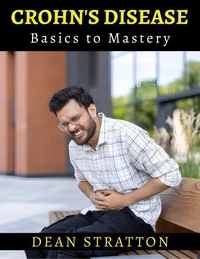From lecture halls to busy clinics, this field guide clarifies conditions once grouped as "neuroses" and now organized as anxiety disorders, obsessive-compulsive and related disorders, trauma- and stressor-related syndromes, somatic symptom presentations, and dissociative conditions. Built for trainees, early-career clinicians, and curious readers, it turns core science into practice: how fear learning powers phobias, why intolerance of uncertainty fuels compulsions, and where stress biology meets attention and memory.
You'll trace step-by-step assessments, risk screens, and formulations, then move into brief, modular interventions you can adapt anywhere-from a ten-minute primary-care visit to longer specialty care. Imagine a software engineer whose heart surges in a meeting, or a teacher who checks locks for hours; each chapter walks through what to ask, how to map maintaining cycles, and which skills to teach first.
Charts, scripts, and mini-exercises keep the learning concrete so that readers can make confident, compassionate decisions without losing the nuance of culture, development, and medical comorbidity.? Diagnostic maps that bridge historical "neurosis" language to current DSM-5-TR categories.? Clinic-style vignettes with full formulations, goals, and progress measures you can reuse.? Stepwise protocols for CBT, ERP, and graded exposure, plus relapse-prevention templates.? Differential diagnosis checklists separating anxiety, OCD-related, trauma, somatic, and dissociative presentations from medical mimics.? Cultural, developmental, and primary-care adaptations, including brief visits and telehealth.? Worksheets, scripts, and decision trees for assessment, safety planning, and skills coaching.
From lecture halls to busy clinics, this field guide clarifies conditions once grouped as "neuroses" and now organized as anxiety disorders, obsessive-compulsive and related disorders, trauma- and stressor-related syndromes, somatic symptom presentations, and dissociative conditions. Built for trainees, early-career clinicians, and curious readers, it turns core science into practice: how fear learning powers phobias, why intolerance of uncertainty fuels compulsions, and where stress biology meets attention and memory.
You'll trace step-by-step assessments, risk screens, and formulations, then move into brief, modular interventions you can adapt anywhere-from a ten-minute primary-care visit to longer specialty care. Imagine a software engineer whose heart surges in a meeting, or a teacher who checks locks for hours; each chapter walks through what to ask, how to map maintaining cycles, and which skills to teach first.
Charts, scripts, and mini-exercises keep the learning concrete so that readers can make confident, compassionate decisions without losing the nuance of culture, development, and medical comorbidity.? Diagnostic maps that bridge historical "neurosis" language to current DSM-5-TR categories.? Clinic-style vignettes with full formulations, goals, and progress measures you can reuse.? Stepwise protocols for CBT, ERP, and graded exposure, plus relapse-prevention templates.? Differential diagnosis checklists separating anxiety, OCD-related, trauma, somatic, and dissociative presentations from medical mimics.? Cultural, developmental, and primary-care adaptations, including brief visits and telehealth.? Worksheets, scripts, and decision trees for assessment, safety planning, and skills coaching.

 , qui est-ce ?
, qui est-ce ?